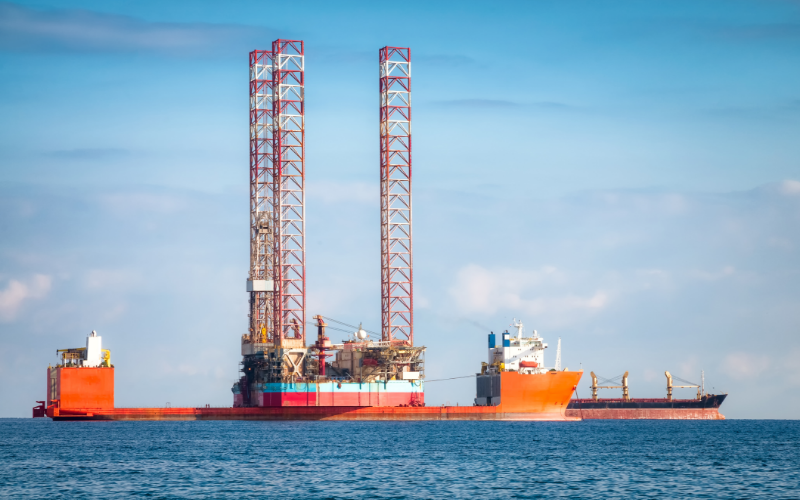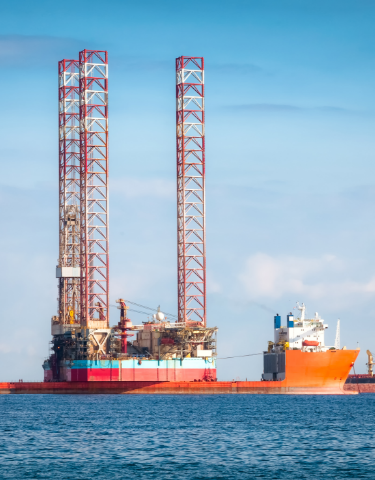Introduction
In the global quest to mitigate climate change, the oil and gas industry stands at a critical juncture. As one of the world’s largest energy companies, Saudi Aramco plays a pivotal role in shaping industry practices and policies. A key area of focus for reducing environmental impact is carbon emissions associated with extracting hydrocarbons from geological formations. Saudi Aramco has implemented innovative strategies and technologies that have positioned it ahead of many competitors in terms of carbon efficiency. This article explores how Saudi Aramco emits less carbon during its operations and the broader implications for climate risk mitigation.
The Carbon Challenge in Oil Extraction
Extracting oil and gas from the earth is inherently carbon intensive. The process involves drilling, which requires substantial energy, and the extraction itself releases carbon dioxide (CO2) and other greenhouse gases. The extent of emissions can vary significantly based on the techniques used, the geological characteristics of the reservoir, and the efficiency of the operation. For energy companies, reducing these emissions is a crucial step toward lowering their overall carbon footprint.
Saudi Aramco’s Carbon Efficiency Strategies
Advanced Reservoir Management
One of the primary ways Saudi Aramco minimizes carbon emissions is through advanced reservoir management. This approach involves using sophisticated modeling and simulation techniques to understand reservoir characteristics better and optimize extraction processes. By accurately predicting the behavior of oil and gas within a reservoir, Aramco can design more efficient extraction methods that minimize energy use and reduce emissions.
Enhanced Oil Recovery (EOR)
Enhanced Oil Recovery (EOR) techniques are critical in maximizing the extraction of hydrocarbons while minimizing environmental impact. Saudi Aramco employs various EOR methods, including gas injection, chemical injection, and thermal recovery. These techniques enhance the flow of oil to the wellbore, making the extraction process more efficient and reducing the need for multiple drilling operations, which are carbon intensive.
Utilization of Low-Carbon Energy Sources
Saudi Aramco has made significant investments in using low-carbon energy sources to power its operations. The company harnesses natural gas, which emits less CO2 compared to other fossil fuels, to power its extraction processes. Moreover, Aramco is increasingly integrating renewable energy sources, such as solar and wind, into its operations. This shift not only reduces direct emissions but also demonstrates a commitment to sustainable energy practices.
Flare Minimization Programs
Flaring, the burning of excess gas during extraction, is a significant source of CO2 emissions in the oil industry. Saudi Aramco has implemented comprehensive flare minimization programs that focus on capturing and utilizing associated gas rather than flaring it. Through advanced gas recovery systems and strict operational protocols, Aramco has significantly reduced flaring activities, thereby lowering its carbon emissions.
Carbon Capture and Storage (CCS)
Carbon Capture and Storage (CCS) is a cornerstone of Saudi Aramco’s strategy to mitigate emissions. The company has developed state-of-the-art CCS facilities that capture CO2 emissions from its operations and store them in geological formations deep underground. This technology not only prevents CO2 from entering the atmosphere but also leverages Aramco’s extensive knowledge of geological formations to ensure safe and permanent storage.
Technological Innovation and Research
Saudi Aramco’s commitment to technological innovation is evident in its substantial investments in research and development (R&D). The company collaborates with leading academic and research institutions worldwide to develop cutting-edge technologies that enhance efficiency and reduce emissions. These efforts include advancements in drilling techniques, improved materials for pipelines and infrastructure, and next-generation EOR methods.
Digital Transformation
The digital transformation of Saudi Aramco’s operations plays a critical role in reducing carbon emissions. By implementing advanced data analytics, machine learning, and artificial intelligence (AI), the company can optimize its operations in real-time. For example, predictive maintenance powered by AI helps prevent equipment failures that could lead to leaks or other inefficiencies, thereby reducing unplanned emissions.
Smart Oilfields
Saudi Aramco is pioneering the concept of smart oilfields, which leverage IoT (Internet of Things) technologies to monitor and control extraction processes. These smart oilfields use sensors and automated systems to gather data on various parameters, such as pressure, temperature, and flow rates. This data-driven approach allows for precise adjustments that enhance efficiency and minimize emissions.
Industry Leadership and Collaboration
Saudi Aramco’s efforts to reduce carbon emissions extend beyond its operations. The company is an active participant in global initiatives aimed at promoting sustainability and climate risk mitigation. By collaborating with other industry leaders, governments, and environmental organizations, Aramco helps set standards and share best practices for reducing emissions in the oil and gas sector.
Global Methane Initiative
Saudi Aramco is a member of the Global Methane Initiative (GMI), a voluntary, multilateral partnership that aims to reduce methane emissions worldwide. Methane, a potent greenhouse gas, is a significant byproduct of oil and gas operations. Through its participation in GMI, Aramco contributes to the development and implementation of technologies and practices that minimize methane emissions across the industry.
Partnerships with Environmental Organizations
Saudi Aramco has established partnerships with various environmental organizations to advance research and development in climate risk mitigation. These collaborations focus on developing innovative solutions to reduce emissions and improve sustainability. For example, Aramco works with the Carbon Trust to explore new methods for carbon management and energy efficiency.
Impact on Climate Risk Mitigation
The measures taken by Saudi Aramco to reduce carbon emissions have far-reaching implications for climate risk mitigation. By leading the industry in carbon efficiency, Aramco sets a benchmark for other oil and gas companies to follow. This leadership helps drive the adoption of best practices and technologies that can significantly lower the carbon footprint of the entire sector.
Contribution to Global Emission Reduction Goals
Saudi Aramco’s efforts align with global emission reduction goals, such as those outlined in the Paris Agreement. By reducing its operational emissions, Aramco contributes to the broader objective of limiting global temperature rise and mitigating the impacts of climate change. The company’s initiatives also support national efforts, particularly in Saudi Arabia, to transition to a more sustainable energy landscape.
Economic Benefits
Investing in carbon efficiency and sustainable practices also yields economic benefits. Saudi Aramco’s commitment to reducing emissions enhances its operational efficiency, resulting in cost savings and improved profitability. Furthermore, as the world increasingly prioritizes sustainability, companies with strong environmental credentials are better positioned to attract investment and maintain a competitive edge.
Challenges and Future Directions
Despite its successes, Saudi Aramco faces ongoing challenges in its quest to further reduce carbon emissions. The scale of its operations and the complexity of the oil extraction process mean that continual innovation and adaptation are necessary. Looking ahead, Aramco is likely to focus on several key areas to sustain and enhance its carbon efficiency efforts.
Expanding Renewable Energy Integration
While Saudi Aramco has made strides in integrating renewable energy into its operations, there is potential for further expansion. Increased investment in solar and wind energy projects, both on-site and in the broader energy grid, will be crucial for reducing reliance on fossil fuels and lowering emissions.
Advancing Carbon Capture and Utilization
Beyond storage, the utilization of captured CO2 presents significant opportunities. Saudi Aramco is exploring ways to convert captured carbon into useful products, such as chemicals and building materials. This approach not only mitigates emissions but also creates new revenue streams and promotes a circular carbon economy.
Enhancing Global Collaboration
As climate change is a global challenge, international collaboration is essential. Saudi Aramco can play a leading role in fostering global partnerships to share knowledge, technologies, and best practices. By working together with other nations and companies, Aramco can help accelerate the transition to a low-carbon future.
Conclusion
Saudi Aramco’s proactive approach to reducing carbon emissions from its oil extraction processes sets a high standard in the industry. Through advanced reservoir management, innovative EOR techniques, utilization of low-carbon energy sources, flare minimization programs, and carbon capture and storage, Aramco demonstrates that it is possible to extract hydrocarbons more sustainably. The company’s commitment to technological innovation, digital transformation, and global collaboration further underscores its leadership in climate risk mitigation. As the world continues to grapple with the urgent need to address climate change, Saudi Aramco’s efforts provide a blueprint for how the oil and gas industry can contribute to a more sustainable future.















